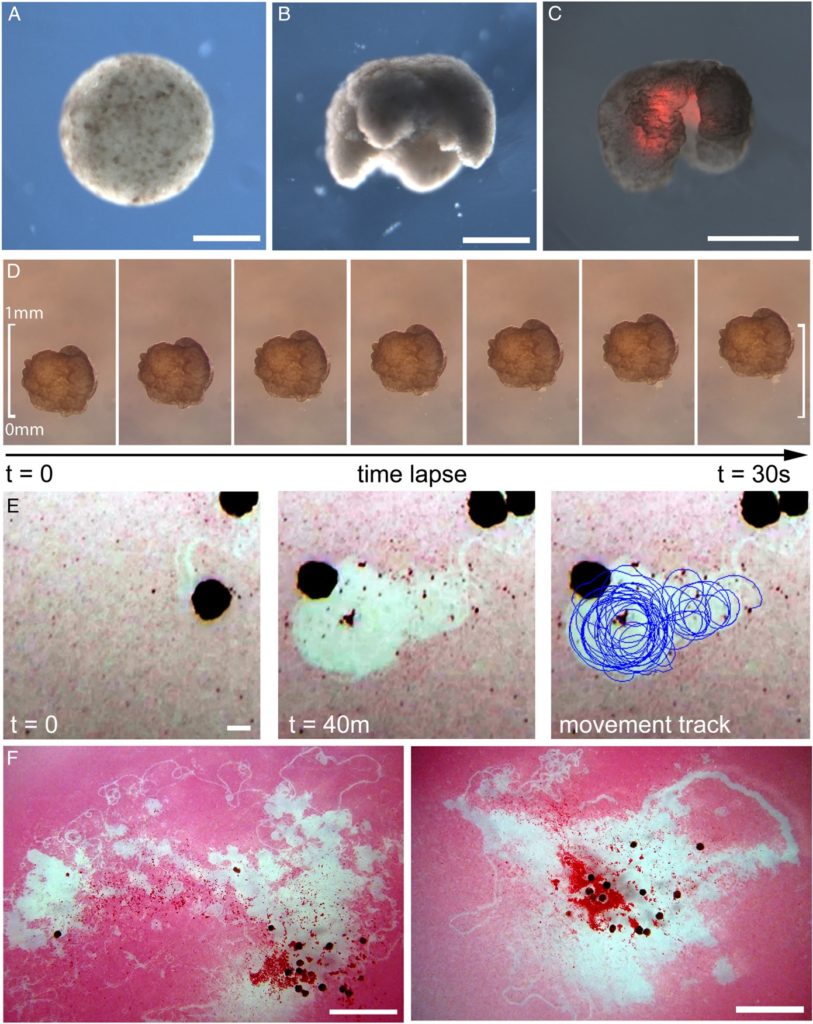Here’s a new entry in the “robot apocalypse” file (though with lots of alternate happy endings). We recently read in the Proceedings of the National Academy of Sciences about a team of researchers from Tufts, Harvard, and the University of Vermont who successfully created microscopic biological machines, entirely out of living cells. (Interested readers can find the complete article here.)
The research team noted:
“Most technologies are made from steel, concrete, chemicals, and plastics, which degrade over time and can produce harmful ecological and health side effects. It would thus be useful to build technologies using self-renewing and biocompatible materials, of which the ideal candidates are living systems themselves. Thus, we here present a method that designs completely biological machines from the ground up: computers automatically design new machines in simulation, and the best designs are then built by combining together different biological tissues. This suggests others may use this approach to design a variety of living machines to safely deliver drugs inside the human body, help with environmental remediation, or further broaden our understanding of the diverse forms and functions life may adopt.”
The robots were constructed beginning with stem cells from African aquatic frogs. Those stem cells could be stimulated to become any number of different types of tissues in a fully-grown frog. But the investigators weren’t interested in making a frog; they were interested in making a small, robust biological machine that could swim around in a fluid, aggregate external particulate matter, move the aggregates around, and do so in concert with other little bio-bots. To that end, they created a computer model of all the available cell types, and let it run random iterations on their combinations and capacities to produce a palette of likely candidates. And they succeeded. They note:
“The lifeforms presented here, despite lacking nervous systems, following novel developmental trajectories, and being composed of materials from different tissues, nevertheless possess… self-organizing properties. These properties synergize with and support the behavior they were designed to exhibit…some of the designs, when combined, spontaneously and collectively aggregate detritus littered within their shared environment. …reconfigurable organisms… self-repair in the face of damage, such as automatically closing lacerations. Such spontaneous behavior cannot be expected from machines built with artificial materials… This approach admits future generalization and automation because the [simulation] architecture enables modular addition, removal, or reorganization of elements in the pipeline for rapid design and deployment of new living systems for new tasks in new domains.”
In short, the bio-bots self-organized, spontaneously collected waste material in the fluid around them, and repaired themselves when damaged — in spite of lacking the structures of an actual animal (such as a nervous system). And new bots for many tasks could be easily designed by applying the same AI algorithm.
Our minds immediately go to the same applications that the investigators identified — drug delivery and other therapeutics, and environmental cleanup. In both cases, the little biological machines could be programmed simply to dissolve after the completion of their task — and their robustness in accomplishing it could be far greater than machines constructed out of inorganic components. (It’s when we add in the capacity for self-reproduction, which these models lacked, that we begin to be a little uncomfortable.)
Certainly, there are also potentially nefarious applications of this technology which will raise eyebrows and cause speculation. But it is likely that either way, the positive applications will eventually be made and the technology will be commercialized. Investors should be aware.
Investment implications: As usual with cutting-edge technologies, we advise investors with a long-term view to monitor such research, note the investigators who are conducting it, and watch for their collaboration with companies in the private sector to apply these technologies commercially. When those companies come public, if the market environment is congenial, far-sighted investors could reap big gains.








